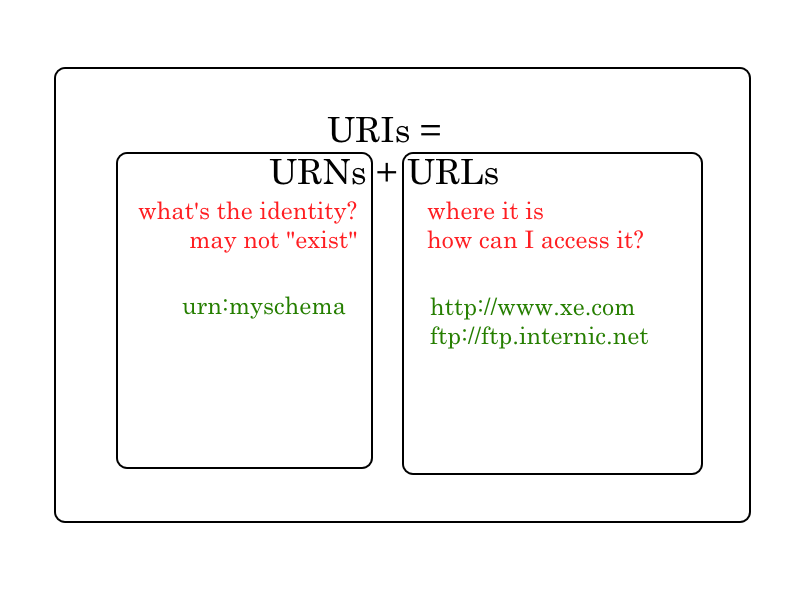You are probably using those concepts without knowing: today let’s speak about URI differences.
URLs: Uniform Resource Locator
Most of us know what is an URL even they are very basic computer users: that’s a way to locate a file somewhere on the network. Everybody will speak about http:// and https:// prefixed URLs. The older you are, the more likely you’ll also list ftp://, gopher:// and and alike.
What most people don’t explicit tell you is that in fact it is a combination of a scheme and a location that should be totally resolvable to get an existing resource from the network.
However explanations are less clear when you ask people about URIs and URNs.
URIs: Uniform Resource Identifier
URIs are easy: there are the combination of URLs and URNs. Nothing more to add here.
URNs: Uniform Resource Name
URNs are more fuzzy depending on the source you are referring to. If you are strict, URNs are everything that start with urn:. You just put something after it in order for you to have a unique name for giving identity to your resource. For example, when you must name your application in a SAML world or your XML schema to the outside world you can create whatever unique name you like after urn:.
General practice nonetheless allows URNs to start with something else than urn, such as tel: for a telephone number. You can also invent your own, like if you were a start-up creator, should you invent a new way to communicate. You then end up with something:somethingelse.
Finally, you may want to note that when an URI is requested people may choose between URNs and non-existing URLs (such as http://myapp.local/) which add to the confusion of these 3 concepts.
The drawing accompanying this article summarizes those differences in a traditional set design:
